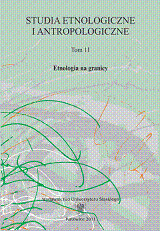Orientalna grupa polska
An oriental Polish group
Author(s): Janusz KamockiSubject(s): Anthropology
Published by: Wydawnictwo Uniwersytetu Śląskiego
Summary/Abstract: An unquestionable phenomenon is the fact of existing in Poland, the country of the tradition of “the bulwark of Christendom”, a small community of Muslim Tatars who settled down as defenders of Polish eastern borders also against their Tatar and Turkish co-believers. The very group has been totally Polonicised, however, maintained its own religion. They remained faithful to Poland, also in the 19th century when Poland stayed under rules. As a recognition of their patriotism, a special unit of cavalry, maintaining the tradition of Polish Tatar army, was created in the inter-war period in the Polish army. Unfortunately, the number of Polish Tatars in the 20th century has decreased significantly. After the World War I and gaining independence out of 11 000 Polish Tatars, half of them was beyond Poland (in Lithuania and Soviet Bielorussia), and after the World War II, when their main headquarters were in the areas occupied by Soviets, many of them were expatriated into the remaining Polish territories, settling down, among others, in the area of north-eastern Poland that was closest to their settlement so far. They recreated here their social and religious life in which, however, they clearly underlined a religious autocefaly of Polish Tatars and a certain separateness of their Islam from the one of an Arabic type. In a rich bunch of the Polish national culture, Polish Tatars create the most oriental flower.
Journal: Studia Etnologiczne i Antropologiczne
- Issue Year: 2011
- Issue No: 11
- Page Range: 282-290
- Page Count: 9
- Language: Polish

